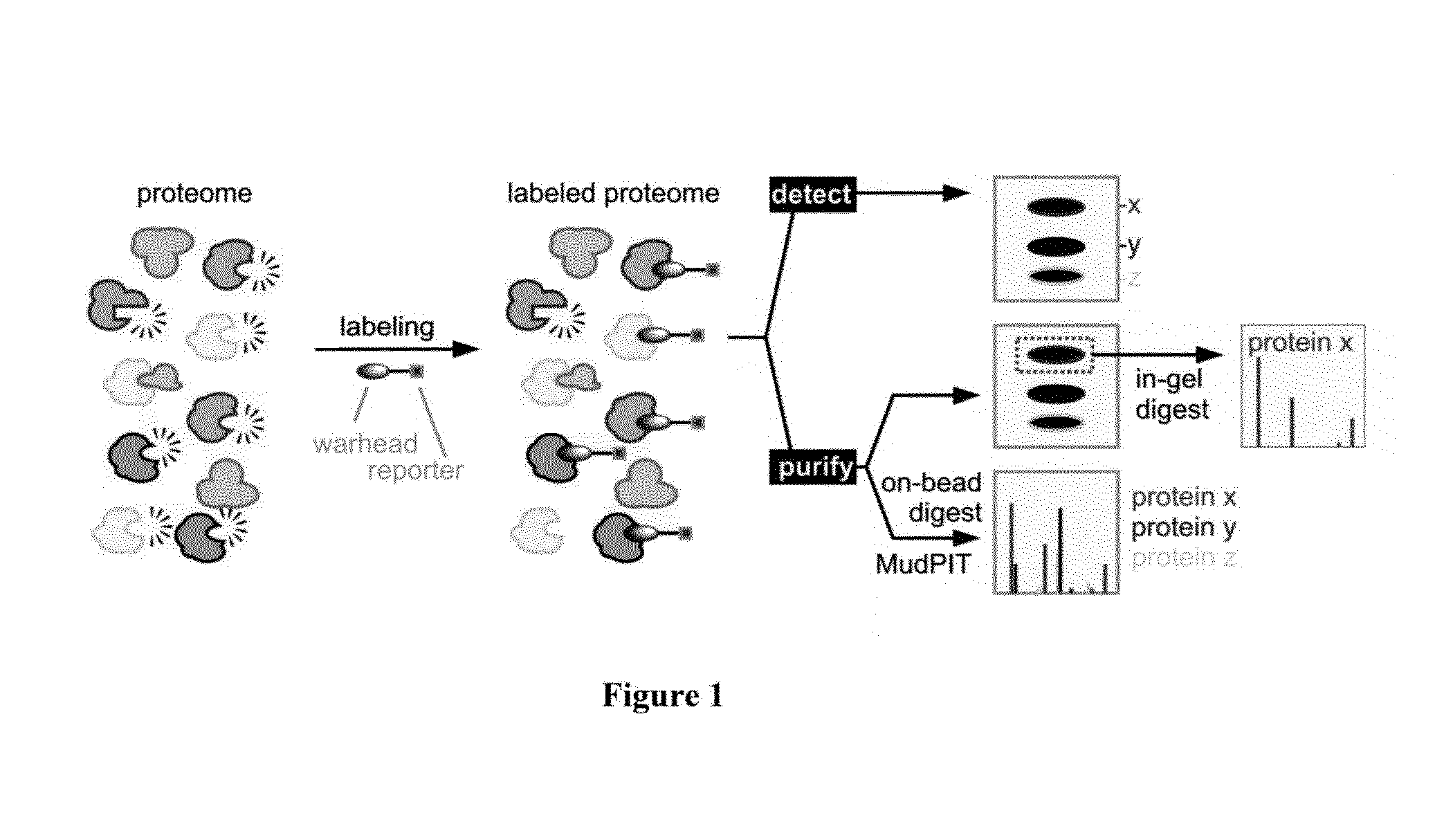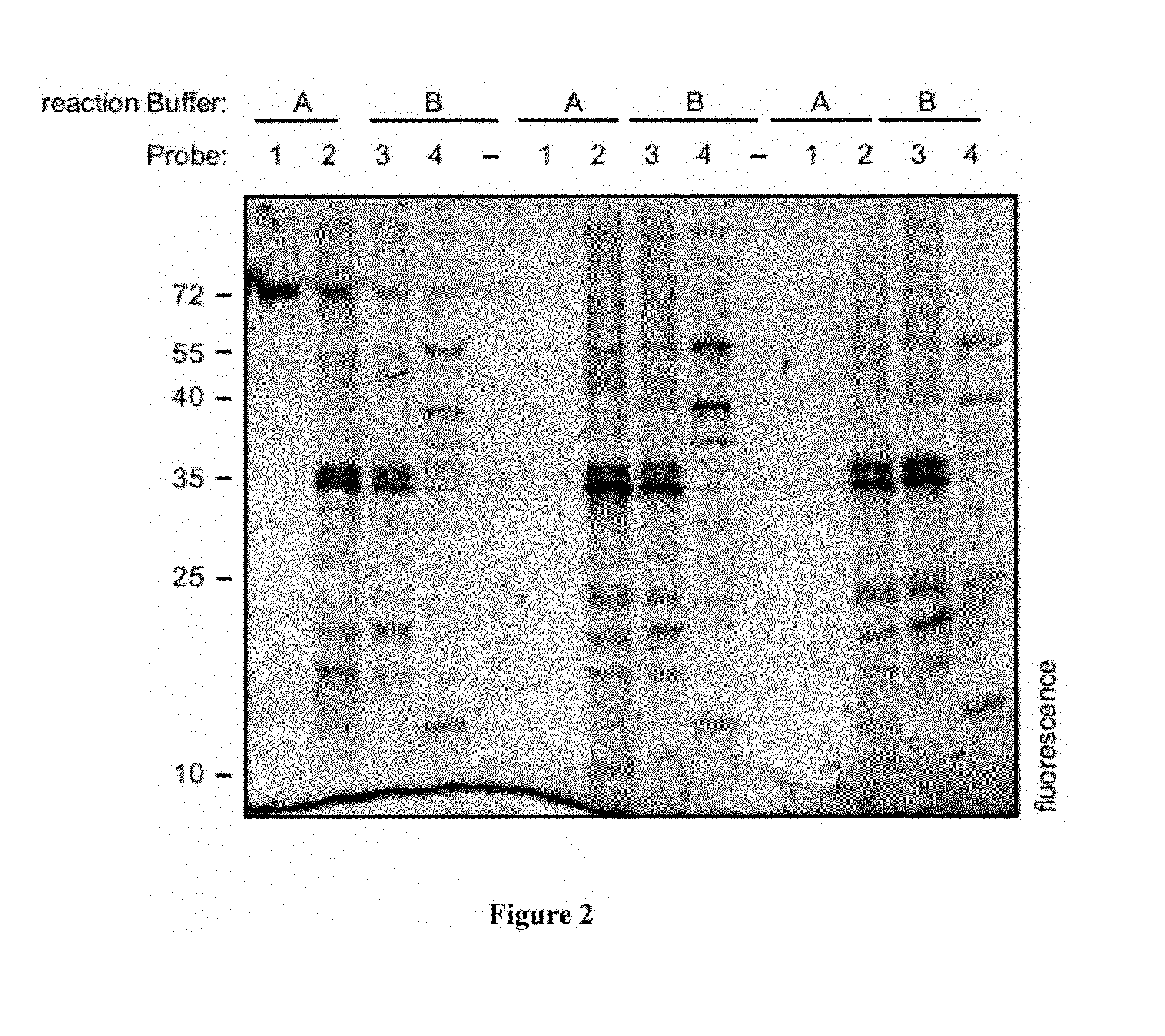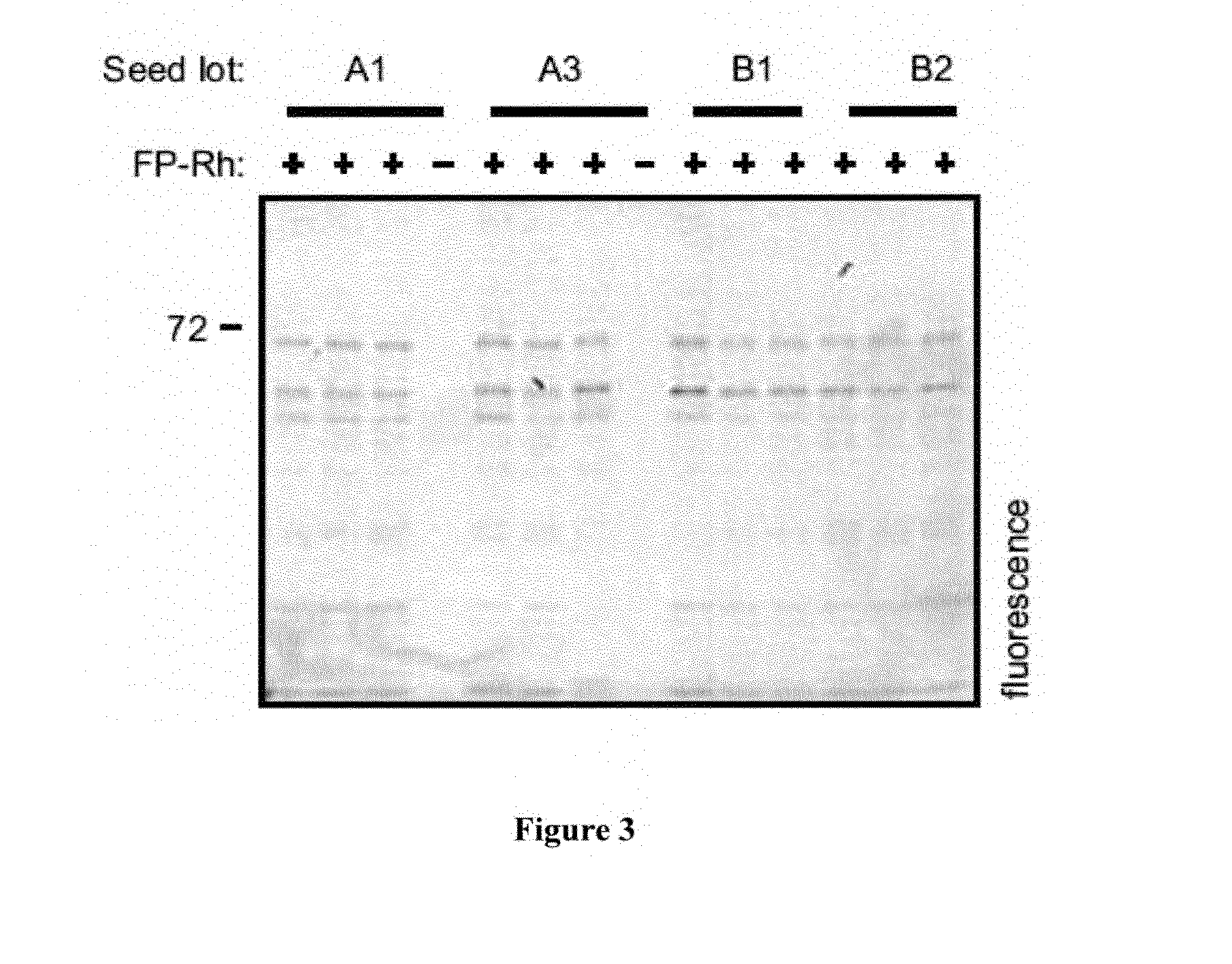Seed trait prediction by activity-based protein profiling
a technology of activity-based protein and seed trait, which is applied in the field of seed trait prediction by activity-based protein profiling, can solve the problem of bottlenecks in finding substrates, and achieve the effects of convenient use, convenient prediction of plant seed quality, and convenient prediction of plant seed traits
- Summary
- Abstract
- Description
- Claims
- Application Information
AI Technical Summary
Benefits of technology
Problems solved by technology
Method used
Image
Examples
example 1
Materials
[0292]Activity-based probes (cf. FIG. 6):[0293]VPE-R for Vacuolar Processing Enzyme[0294]βN3DCG-04 for Papain-like cysteine proteases[0295]MV151 for the proteasome (signals at 25 kDa) and for papain-like cysteine proteases (PLCPs, signals at 30 and 40 kDa)[0296]FP-Rh for Ser hydrolases
[0297]Used tomato seeds: two seed lots of varieties A and B, with different viabilities:[0298]A1 (92%); A3 (74%); B1 (94%); B3 (79%)
[0299]In general, seeds (one per reaction) were ground in eppendorf tube with water or labelling buffer. Subsequently, the protein extract was centrifuged and supernatant was taken for labeling. Labeling was performed for 1-2 hours with various fluorescent activity-based probes (see above) in various labeling buffers. Proteins were subsequently separated on protein gels. Fluorescently labeled proteins were detected by fluorescence scanning.
[0300]In particular, one tomato seed was homogenized in 100 μl 50 mM borate buffer pH 7.6 using two steel beads in an eppendor...
example 2
[0310]FIG. 3 depicts a fluorescence gel demonstrating that ABPP can be used to label different seed lots. Several plant seed extracts derived from different seed lots were labeled using the chemical probe FP-Rh (Ser hydrolases). Labeling was performed on seed proteins derived from seed lots A1, A3, B1 and B3. The labeled protein samples were then used for the preparation of a fluorescence gel. Control lanes (−) depict unlabeled protein extract. Robust labelling was detected for all seed lots.
example 3
[0311]FIG. 4 depicts a fluorescence gel demonstrating that differential protein activities can be detected upon seed hydration. A plant seed extract derived from a dry seed (lane D) and a plant seed extract derived from a seed which was hydrated for 24 hours (lane I) was labeled using three different chemical probes. Labeling was performed on seed proteins in two buffers:
[0312]A: 50 mM NaOAc, pH 5.5, 1 mM DTT
[0313]B: 50 mM Tris, pH 7.6, 1 mM DTT.
[0314]Three different chemical probes have been used to label the plant seed extracts, respectively:
[0315]1: βN3DCG-04 (Cys proteases)
[0316]2: MV151 (proteasome) and
[0317]3: FP-Rh (Ser hydrolases).
[0318]The labeled protein samples were then used for the preparation of a fluorescence gel. Control lanes (−) depict unlabeled protein extract. The last lane depicts an additional 40 kDa Ser hydrolase activity upon hydration.
PUM
| Property | Measurement | Unit |
|---|---|---|
| pH | aaaaa | aaaaa |
| mass | aaaaa | aaaaa |
| time | aaaaa | aaaaa |
Abstract
Description
Claims
Application Information
 Login to View More
Login to View More - R&D
- Intellectual Property
- Life Sciences
- Materials
- Tech Scout
- Unparalleled Data Quality
- Higher Quality Content
- 60% Fewer Hallucinations
Browse by: Latest US Patents, China's latest patents, Technical Efficacy Thesaurus, Application Domain, Technology Topic, Popular Technical Reports.
© 2025 PatSnap. All rights reserved.Legal|Privacy policy|Modern Slavery Act Transparency Statement|Sitemap|About US| Contact US: help@patsnap.com



